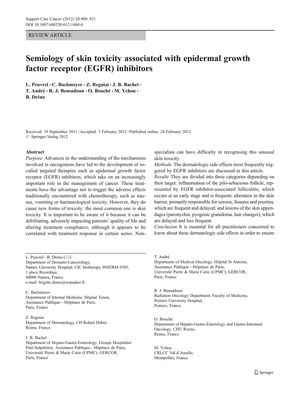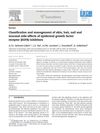Semiology of Skin Toxicity Associated with Epidermal Growth Factor Receptor Inhibitors
February 2012
in “
Supportive Care in Cancer
”

TLDR Skin problems like acne, dry skin, and nail and hair changes are common in patients taking EGFR inhibitors.
The document reviewed the dermatologic side effects of epidermal growth factor receptor (EGFR) inhibitors, highlighting the importance of recognizing these side effects to maintain patient quality of life and treatment compliance. It categorized the side effects into three groups: folliculitis, skin barrier alterations, and lesions of skin appendages. Folliculitis was noted as the most common, affecting over 50% of patients, with severity being dose-dependent. Xerosis was reported to affect 20% to 50% of patients within the first month, increasing to 100% after 6 months. Nail changes were observed in 10% to 30% of patients, typically after 2 months of treatment, and hair changes, including alopecia, affected 50% of patients but were reversible. The document also introduced the MESTT classification for grading skin reactions and noted its excellent correlation with the NCI-CTCAE version 4.0 for certain side effects, though it may be more complex to use without dermatological training. The need for accurate classification and assessment of these side effects was emphasized to manage patient care effectively.




